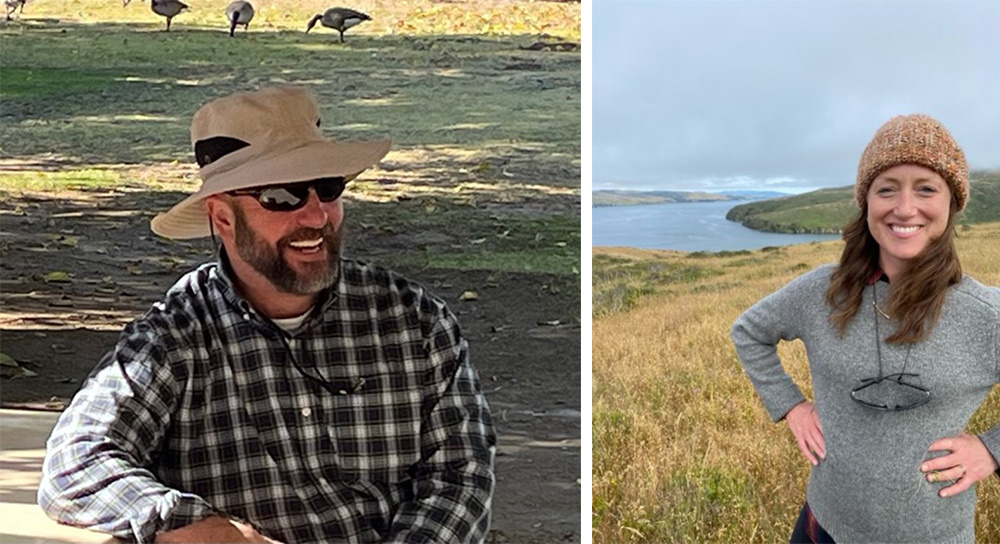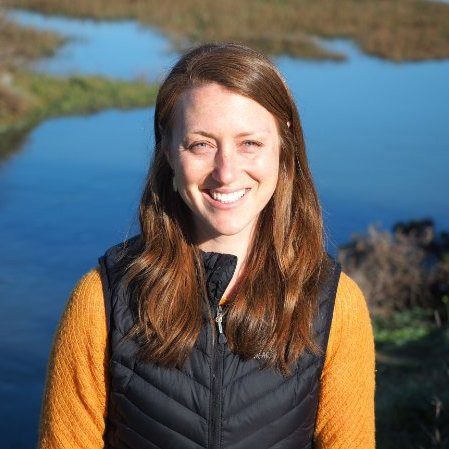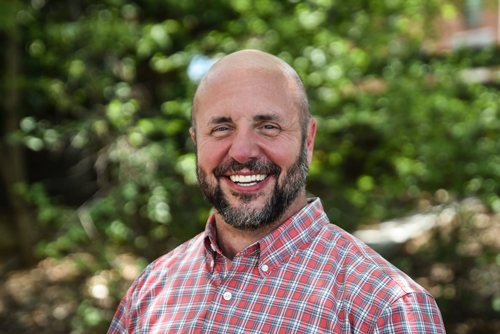Our guest is a scientist and innovator who brings new thinking and new applications of nature-based solutions (NBS) into her work every day. In Season 7, Episode 3, host Sarah Thorne is joined by cohost Jeff King, National Lead of the Engineering With Nature Program (EWN), and Julie Beagle, Environmental Planning Section Chief for the USACE San Francisco District. Julie joined the Corps of Engineers three years ago desiring to make the biggest impact possible. Jeff notes that, since then, Julie’s leadership on EWN has been absolutely outstanding and her passion for NBS to address a whole range of projects in the San Francisco Bay and throughout the district is inspiring. She’s moving the needle when it comes to advancing the practice of integrating NBS into project decision-making.
Julie began her career as a field scientist working in rivers all day, on a job that let her be outside doing science. As a geomorphologist, she studied how sediment and water shape the surface of the earth. In her early career, she focused on protecting salmonid species in northern California, guided by the Endangered Species Act. She also assisted communities in restoring rivers and explored landscape management strategies to better protect and integrate habitats. Then she worked her way downstream into more engineered flood-control channels working on issues related to water quality and the interaction of land use and development. She notes that, “over the last 15 years, climate change became the driver. I became focused on how landscapes, people, species, and ecosystems are going to adapt to this changed reality.”
As Julie describes it, “I made my way down into the estuary and, all of a sudden, the water started to move in two directions. It was mind-blowing. Looking upstream, the whole watershed connects. What happens in the upper watershed influences what happens on the alluvial fans on the floodplains down into the tidal marshes and down to the bay and the outer ocean. It really helped me understand this entire landscape that we have modified and are now having to adapt for all the benefits that we need from our ecosystems and lands—the recreation it provides, the habitat, and all the interactions we have with water. I knew we couldn’t do this in a piece-by-piece way. We have to take a landscape approach, and that’s why Engineering With Nature really resonates for me.”
In the decade before coming to USACE, Julie worked with cities, counties, and flood control districts to help them understand their water resource challenges and integrate NBS. But the limitations of the piecemeal approach were clear: “If every individual landowner, flood-control district, or wastewater treatment plant has to make these decisions on their own, it’s inequitable. The communities that have money can move forward and adapt, and the communities without are the ones who are going to continue to be flooded.” USACE’s mission, scope, and breadth to act at a landscape scale motivated Julie to take the leap and join USACE.

Source: SFEI Website.
One of the projects that Julie worked on right before coming to USACE was the San Francisco Bay Shoreline Adaptation Atlas: Working with Nature to Plan for Sea Level Rise Using Operational Landscape Units. This publication helps communities identify different adaptation strategies that take advantage of natural processes. As Julie describes it, “In San Francisco Bay, there’s a lot of interest in softening the shoreline, this idea of NBS, living shorelines. But there wasn’t a lot of guidance on where and how and what types of nature-based features are appropriate. So, there was a lot of interest from both regulatory agencies, communities, cities, and parks districts.” The Adaptation Atlas does just that by providing communities with the tools they need to incorporate these innovative approaches.
Julie has translated her experience to what she is doing for USACE today with the opportunity to work in different areas and across jurisdictions. “I’ve been focused on San Francisco Bay for a long time, but I’m really excited about Humboldt Bay, another estuary in far Northern California, and San Diego Bay, and all these other estuaries starting to think about this Adaptation Atlas–type approach. We can help them develop these same types of toolkits and then make that connection to the dredge material that the Army Corps produces across the entire West Coast. It’s really a powerful scale to be able to work at.” Julie sees numerous opportunities for nature-based adaptation along the shoreline, which requires sediment from the Army Corps who is responsible for dredging: “This sediment is a huge reuse opportunity for marsh creation, restoration, augmentation, and building nature-based features.”
Julie also sees significant social and environmental opportunities of using this sediment wisely: “The same systems that created the inequity that we see today—redlining, racist housing policies that had communities living in the most low-lying, flood prone areas—created some of the same patterns that wiped out all the nature that we had in those areas. We’re left with communities living below sea level, without adequate flood protection, without access to parks, without access to nature. We can move the needle on protecting communities by working with communities through collaborative processes and using our position as stewards of federal dollars to support communities’ visions; and those visions include marshes, access to fishing, access to recreation, as well as flood protection.”
As Jeff notes, the Guadalupe River project is a good example of supporting environmental and social goals. The Guadalupe River runs through the very dense city of San Jose, California, in the heart of Silicon Valley. It’s a classic urban stream that has development right up to the edge of it; and it also supports steelhead trout, an endangered salmonid species. It’s a project that has been in the works at the Army Corps for over 20 years, but the proposed solution just added another trapezoidal channel parallel to the main channel. As Julie describes it, “The velocities were too high, the communities didn’t like it and it would have been sort of dangerous.” So, USACE took another look at it using an EWN lens. Because they had planned to build a bypass channel, there was available space that could be used to give the river more room. So, they designed a fairly large floodplain bench reminiscent of how the river used to connect to its floodplain. This provided the needed flood benefits as well as an enhanced riparian corridor. Julie notes, “It really became a win-win. Not only is this better for the environment, it’s better for the communities, and it also saves a lot of money.”
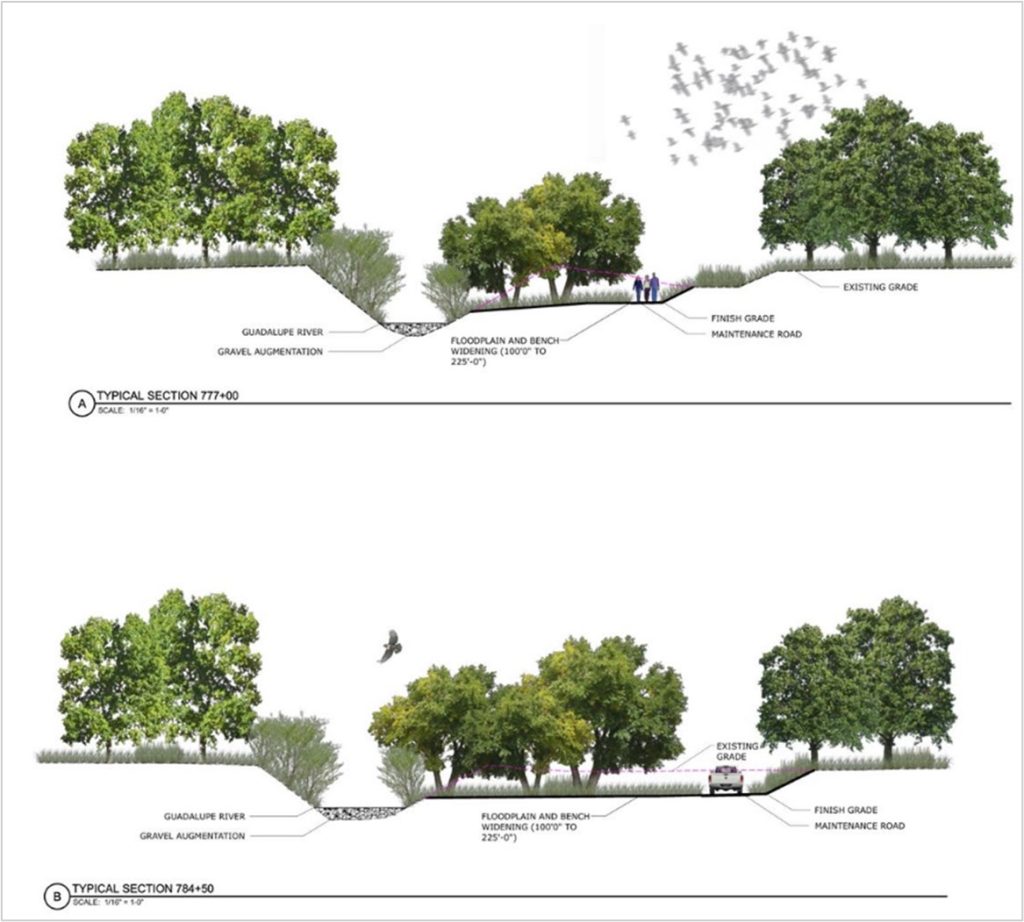
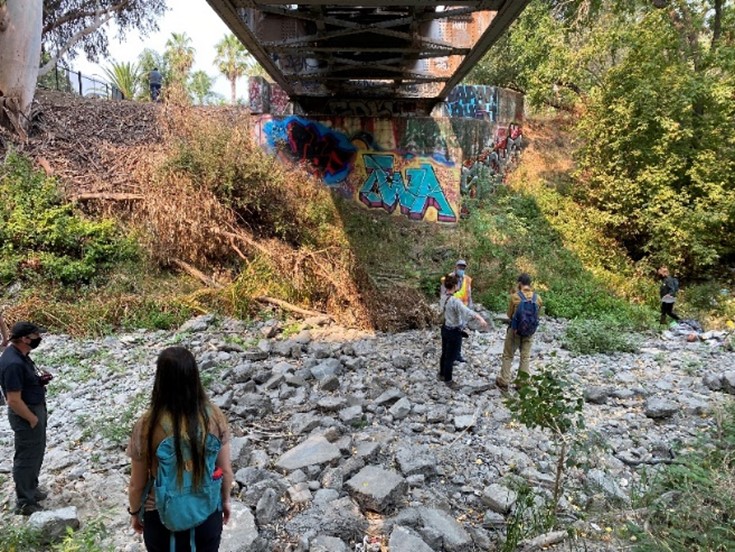
Jeff notes the importance of taking what is being demonstrated in the San Francisco District and replicating it across the country. “USACE dredges around 250 million cubic yards of sediment annually—that’s a significant resource. Being able to keep that material in systems to use for constructing natural infrastructure is so important. What Julie is doing in the San Francisco District has a lot of value. We want to capture that and share the learnings and experiences you’re having as an EWN Proving Ground with the rest of the Corps enterprise.”
Leveraging her role as the EWN Lead in San Francisco District, Julie’s goal is “to make NBS just part of the fabric of the way we do business.” Jeff agrees, “I want this to be something that we use time and time again. NBS should become integrated into all our project decision-making. That is real culture change, and Julie’s leadership is a great example.”
